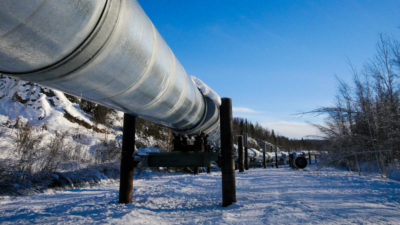There’s no way to sugar coat it; 2015 was an awful year for the Canadian energy sector. From weak oil prices to election outcomes, pipeline denials, and delays, it seemed that whatever could go wrong did go wrong. And unfortunately, 2016 doesn’t look like it will be any better, especially given the outlook for industry spending in the year ahead.
2015: death by a thousand cuts
If there was one key theme for the Canadian oil sector in 2015, it was that 2015 was the year of the cut. Jobs were one of the first things producers cut. Suncor Energy Inc. (TSX:SU)(NYSE:SU), for example, started the year off by axing 1,000 jobs in response to low oil prices.
Oil industry workers, however, weren’t the only ones to see their income stream fall alongside low oil prices; dividends were also a key cash outflow cut during the downturn. Cenovus Energy Inc. (TSX:CVE)(NYSE:CVE), for example, announced a 40% cut to its dividend in July to go along with a 15% reduction to its workforce.
Another area that saw deep cuts was capex spending. The seven biggest Canadian energy producers cut capex spending by an average of 39%, which added up to a $12 billion spending reduction from the prior year. Canadian Natural Resources Limited (TSX:CNQ)(NYSE:CNQ), for example, cut its capex spending budget five times during the year, reducing it by a total of $3.2 billion from the start of the year.
2016: more of the same
One would think that there’s little left to be cut in the oil industry, but that doesn’t appear to be the case. Analysts expect that capex spending by Canada’s seven-largest producers could see a further reduction of 10-20% in 2016, given current oil prices and cash flow expectation.
In fact, Cenovus Energy has already announced an initial 2016 budget; at a range of $1.4-1.6 billion, it is about 19% below this year’s expected spending level. Meanwhile, Canadian Natural Resources expects its spending next year to be $4.5-5 billion, which is almost a billion less than it spent this year at the low end.
That said, even companies such as Suncor, which is boosting spending next year by as much as $1 billion, won’t see any tangible benefit in 2016 because its production is still expected to fall. In fact, if anything will be different in 2016 in Canada, it will be the expectation that production will roll over and start to slide.
For example, Suncor’s production is expected to average between 525,000 and 565,000 barrels per day, which at the mid-point is below this year’s guidance of between 540,000 and 580,000 barrels per day. Suncor is just one of a number of producers that are projecting a potential production decline next year because it isn’t planning to spend enough capital on near-term projects to maintain production.
That said, given the current glut of oil and gas in the market, this is the one cut that producers probably should have started to make a whole lot earlier.
Investor takeaway
At the moment, it would appear that 2016 could be a repeat of 2015 with persistently low oil prices forcing producers to make additional cuts to adjust to a lower-for-longer cycle. That said, at some point these cuts, not just in Canada but around the world, should rebalance the oil market. It’s at that point that oil prices should finally begin to improve and enable the industry to begin to heal some of its wounds from the past couple of years.
The hope is that this healing will begin before the end of 2016, but investors still need to be prepared for what could be another really rough year.







